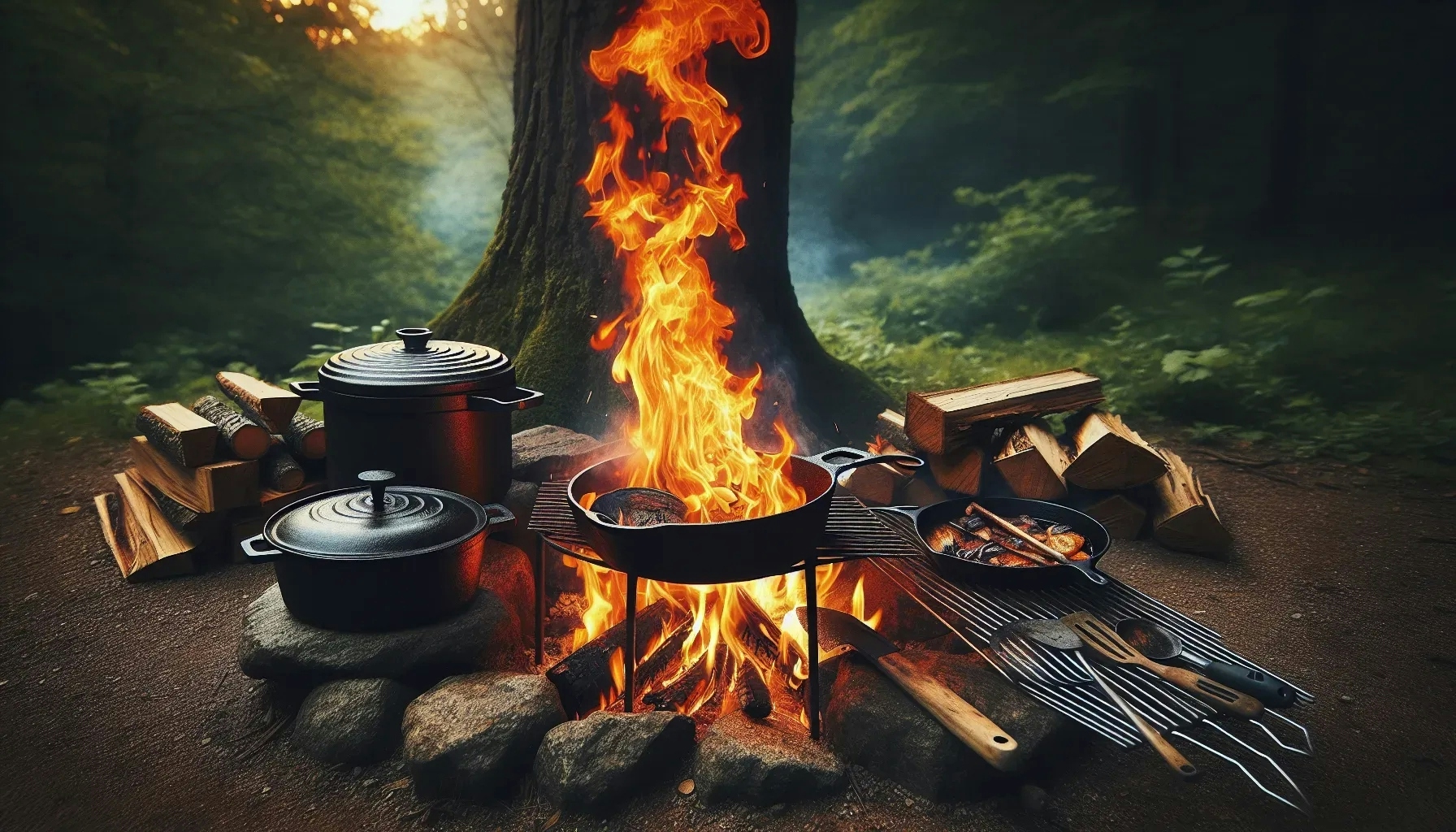Welcome to the world of campfire cooking, where the crackle of the fire and the aroma of food cooking over open flames create an unforgettable experience. This blog post will guide you through the art of campfire cooking, providing you with mouth-watering recipes and practical tips. Whether you're a seasoned camper or a novice, you'll find something to enhance your outdoor cooking skills.
The Essentials of Campfire Cooking
Campfire cooking is more than just roasting marshmallows. It's about creating delicious meals with limited resources, and it requires a certain level of skill and knowledge. Understanding the basics of campfire cooking is the first step to mastering this art.
Safety should always be your top priority when cooking over a campfire. Always keep a bucket of water or a fire extinguisher nearby in case the fire gets out of control. Never leave the fire unattended and make sure it's completely extinguished before leaving the campsite.
Choosing the right equipment is also crucial. Cast iron cookware is a popular choice due to its durability and heat retention properties. A tripod for hanging pots over the fire, a grill grate, and long-handled utensils are also handy tools to have.
The type of fire you build can affect your cooking. For most campfire cooking, a bed of hot coals provides a steady, even heat source. To create this, let a wood fire burn down until you have a pile of glowing embers.
Campfire Cooking Techniques
There are several techniques you can use when cooking over a campfire, each with its unique flavor and texture. Grilling is the most common method, perfect for cooking steaks, burgers, and vegetables.
Roasting is another popular technique, where food is cooked slowly over the fire, often on a spit. This method is ideal for larger cuts of meat and whole birds.
For a more traditional approach, try cooking directly on the embers. This method, known as ember cooking, imparts a smoky flavor to the food.
Steaming is a healthier cooking method, where food is cooked in a foil packet with a little water. This technique is great for fish and vegetables.
Lastly, there's the Dutch oven, a versatile piece of equipment that allows you to bake, stew, and roast over a campfire.
Campfire Cooking Recipes
Now that we've covered the basics, let's dive into some delicious campfire cooking recipes.
For breakfast, try a hearty campfire skillet. Cook bacon and diced potatoes in a cast iron skillet, then add eggs and cheese. Cover and cook until the eggs are set and the cheese is melted.
For lunch, a foil packet meal is a simple and tasty option. Place sliced sausage, chopped vegetables, and a drizzle of olive oil on a piece of foil. Fold the foil into a packet and cook on the grill grate until the vegetables are tender.
For dinner, a campfire stew is a comforting choice. In a Dutch oven, brown some beef chunks, then add chopped vegetables, canned tomatoes, and beef broth. Cover and let it simmer over the fire until the beef is tender.
Don't forget dessert! Try some campfire baked apples. Core an apple and fill the cavity with brown sugar and cinnamon. Wrap in foil and cook in the embers until the apple is soft.
Tips for Successful Campfire Cooking
To ensure your campfire cooking experience is a success, here are some tips.
Plan your meals ahead of time and do as much prep work as possible at home. This will save you time and effort at the campsite.
Always keep a close eye on your food when it's cooking. Campfire temperatures can be unpredictable, and food can burn quickly.
Remember to clean up after yourself. Leaving food scraps around can attract wildlife, which can be dangerous.
Lastly, practice makes perfect. The more you cook over a campfire, the better you'll get at controlling the heat and timing your cooking.
The Environmental Impact of Campfire Cooking
While campfire cooking is an enjoyable activity, it's important to consider its environmental impact.
Burning wood releases carbon dioxide, a greenhouse gas that contributes to climate change. To minimize your impact, use fallen branches instead of cutting down trees for firewood.
Cooking over a campfire can also cause ground scorching, which can damage the soil and vegetation. To prevent this, use designated fire pits or portable campfire rings.
Lastly, always follow the "Leave No Trace" principles. This means packing out all your trash, extinguishing your fire completely, and leaving the campsite as you found it.
The Social Aspect of Campfire Cooking
Campfire cooking is not just about the food; it's also a social activity that brings people together.
Sitting around a campfire, sharing stories, and cooking a meal together can create lasting memories. It's a chance to disconnect from technology and connect with nature and each other.
Whether you're camping with family, friends, or a group of fellow adventurers, campfire cooking can enhance your outdoor experience and create a sense of community.
Wrapping Up the Campfire Cooking Adventure
We've journeyed through the art of campfire cooking, exploring essential techniques, mouth-watering recipes, and valuable tips. We've also considered the environmental impact and the social aspect of this age-old tradition. With this knowledge, you're now equipped to create your own memorable campfire cooking experiences. So, gather your equipment, round up your fellow campers, and let the adventure begin!

